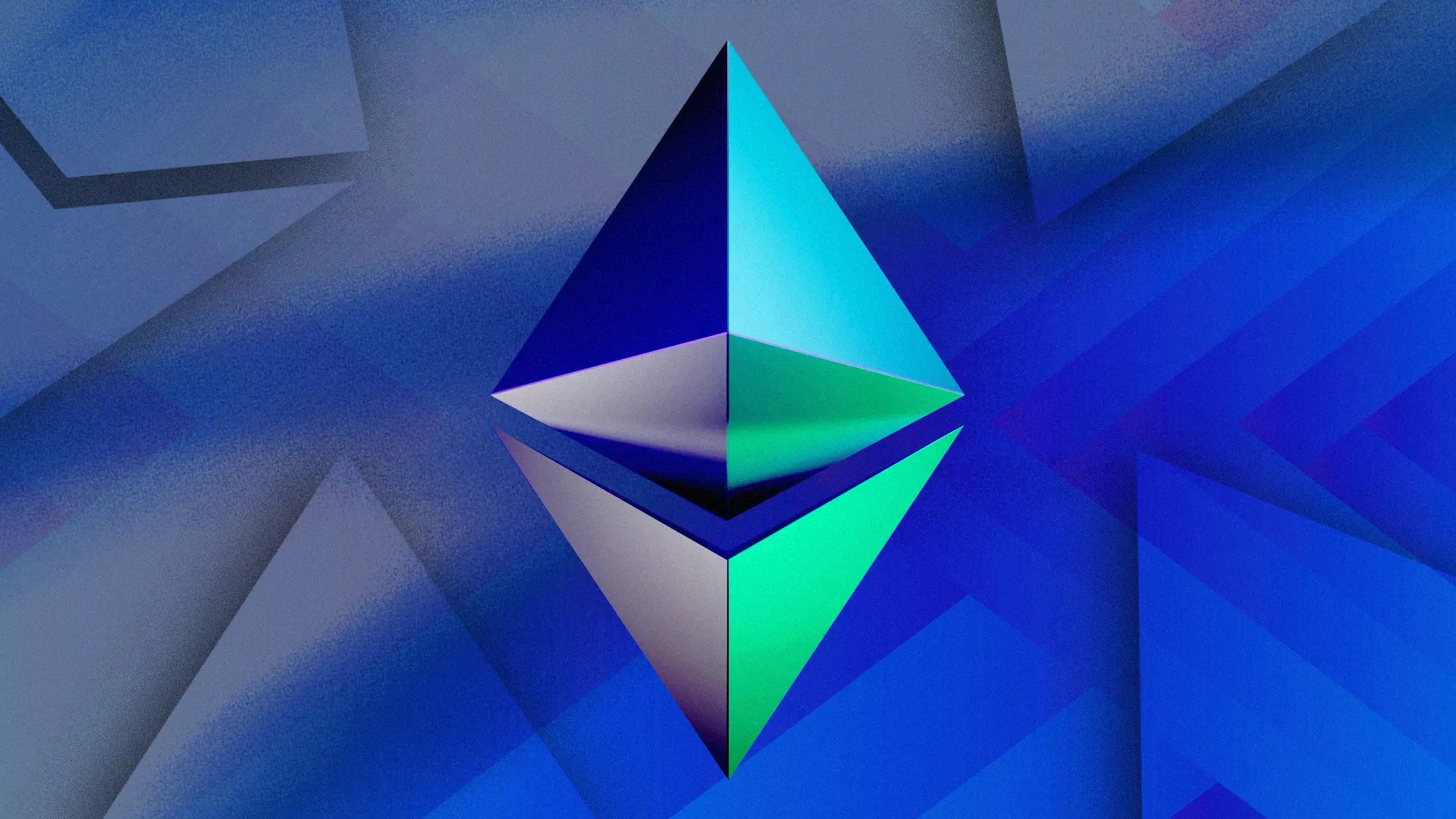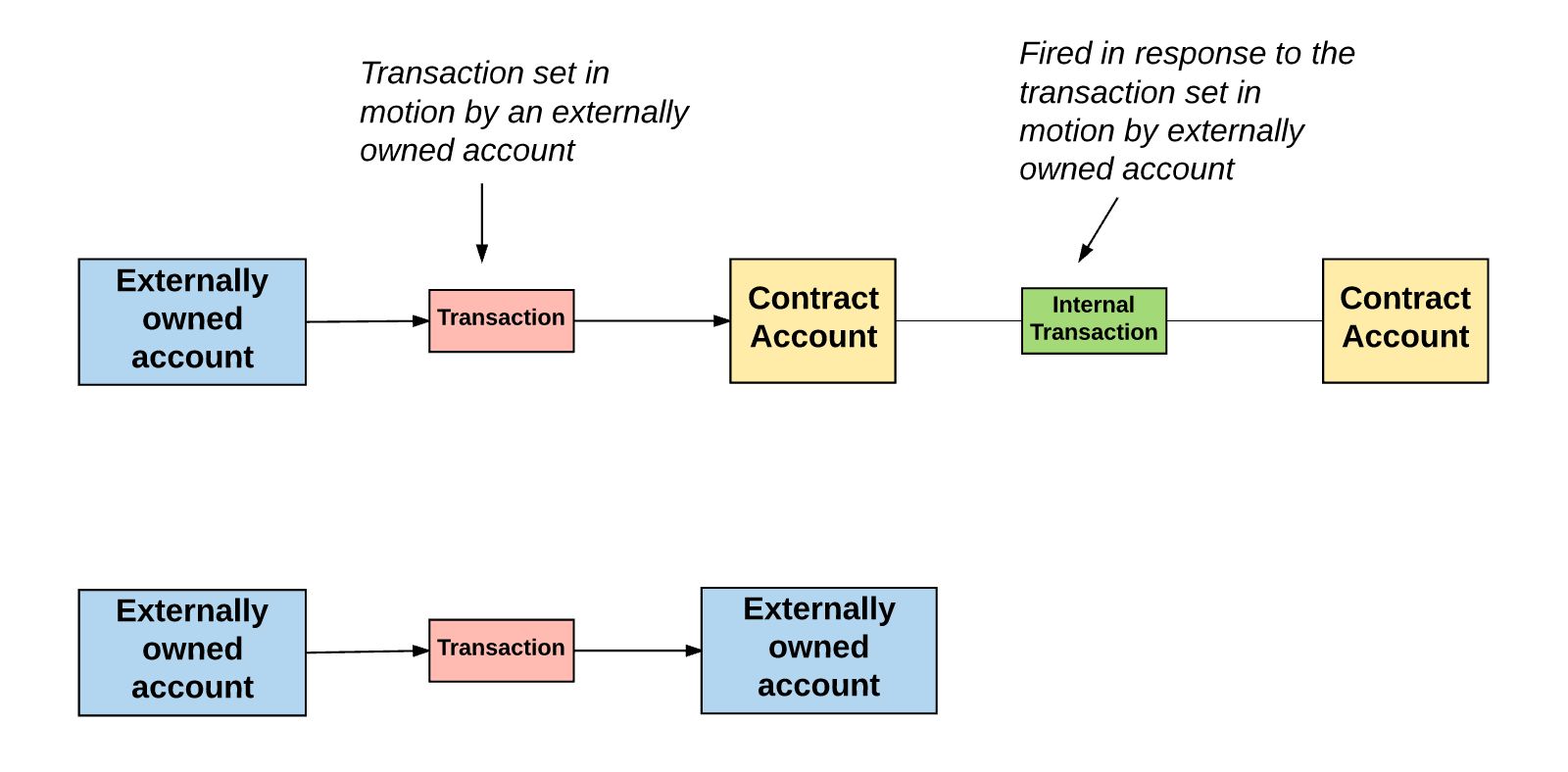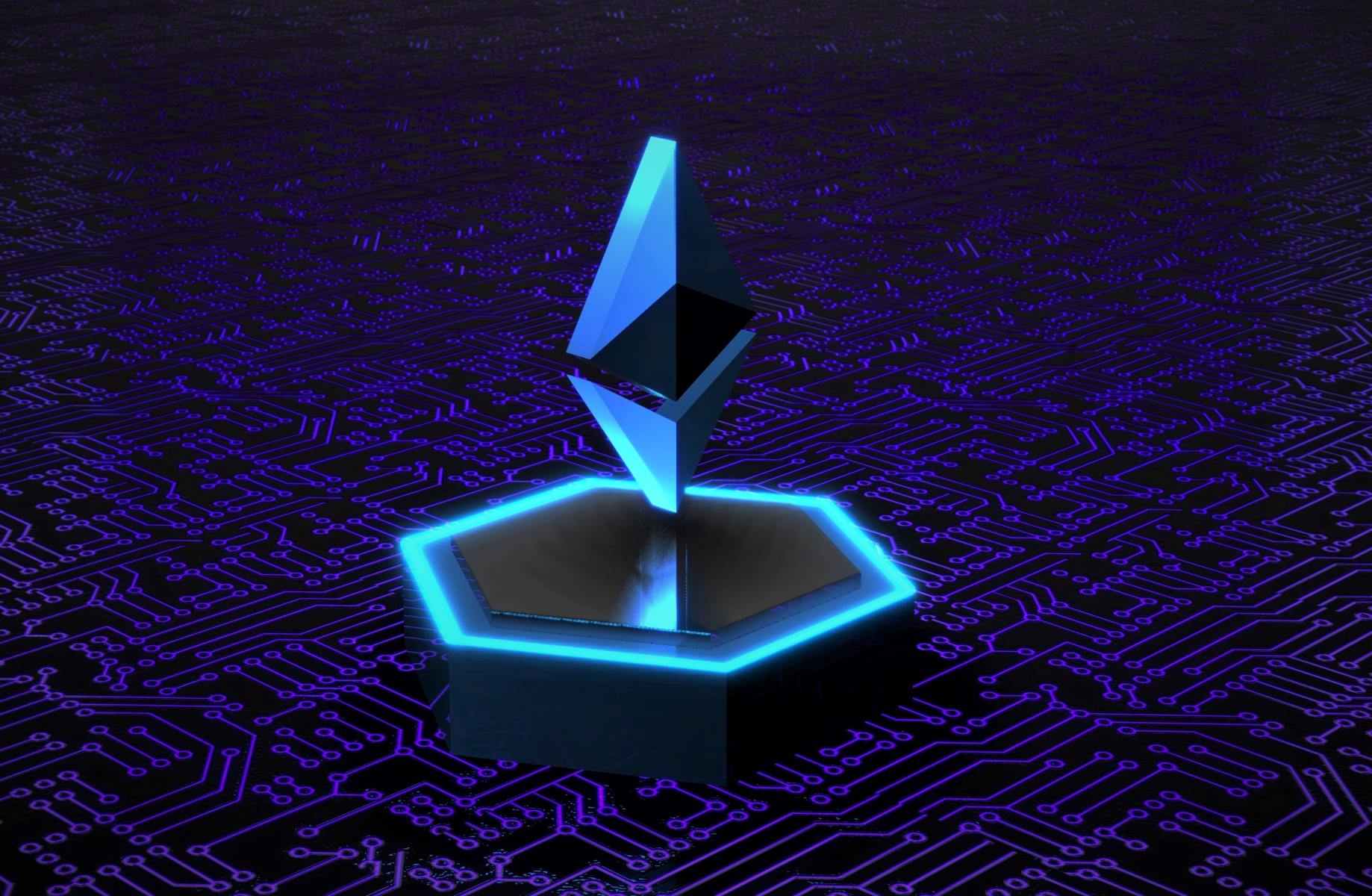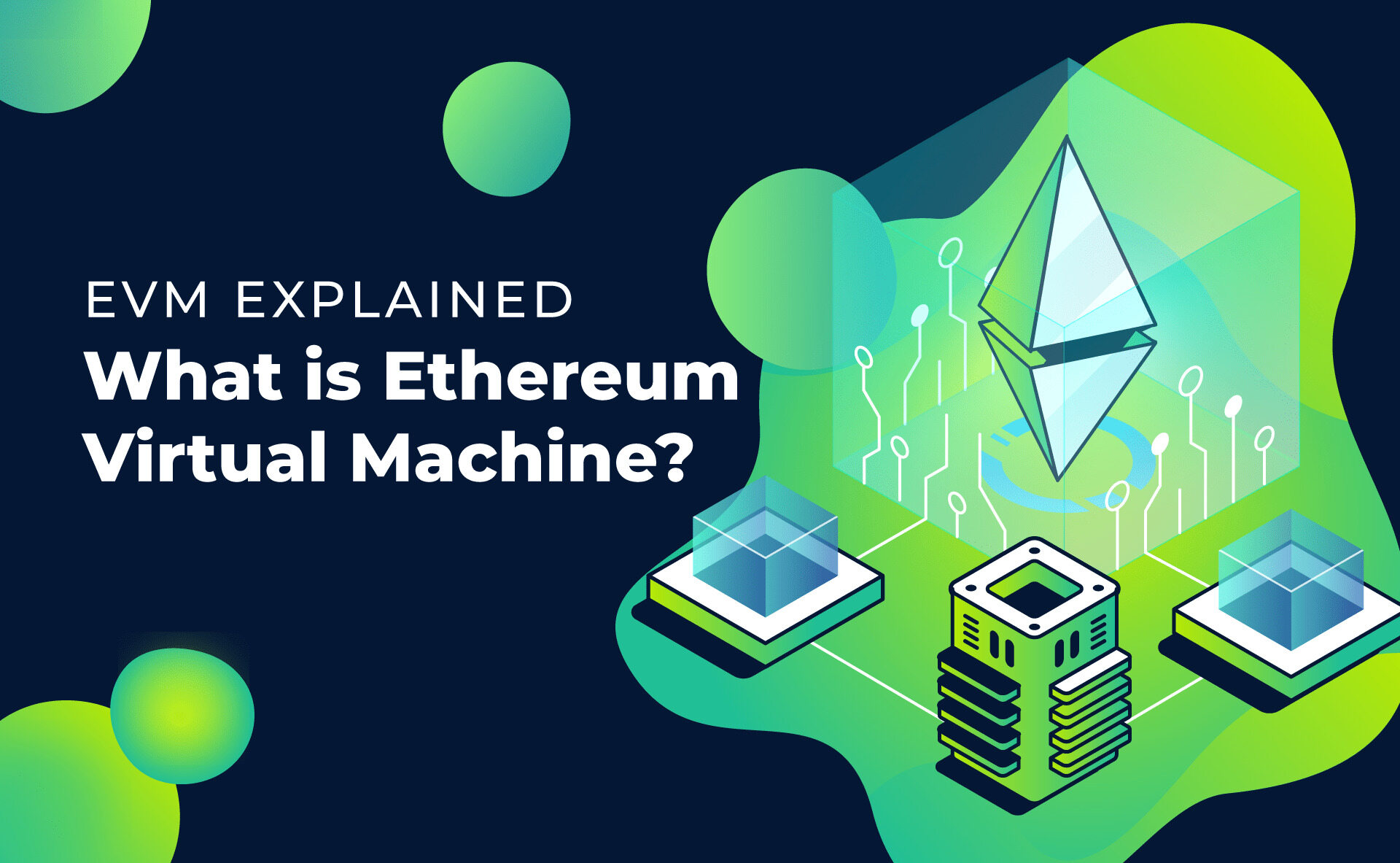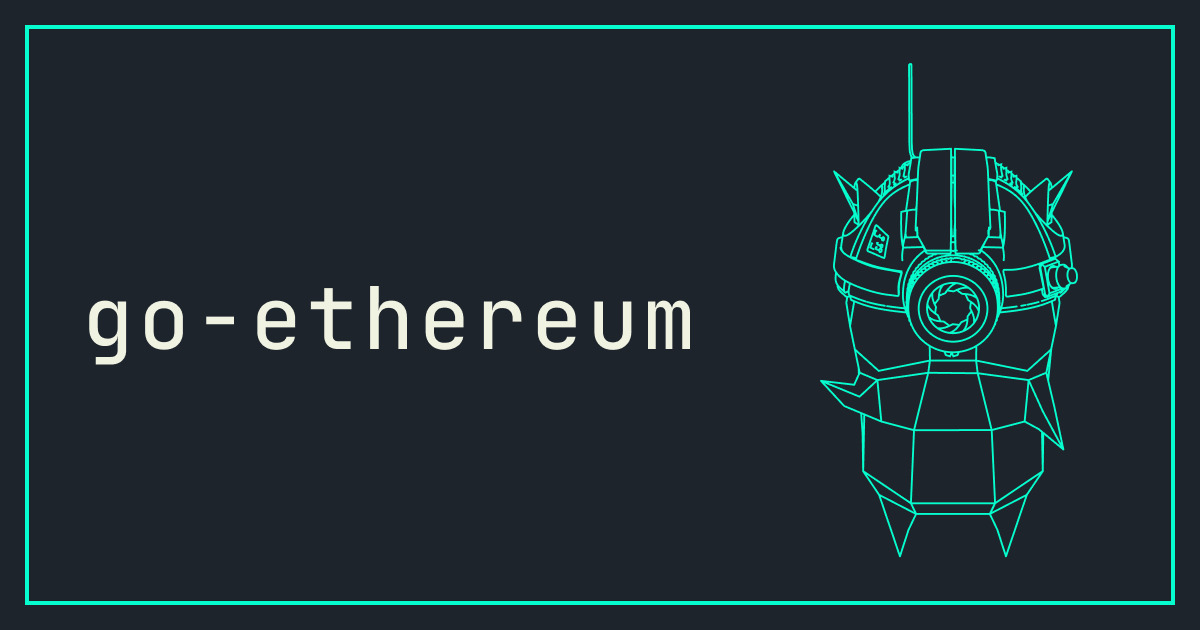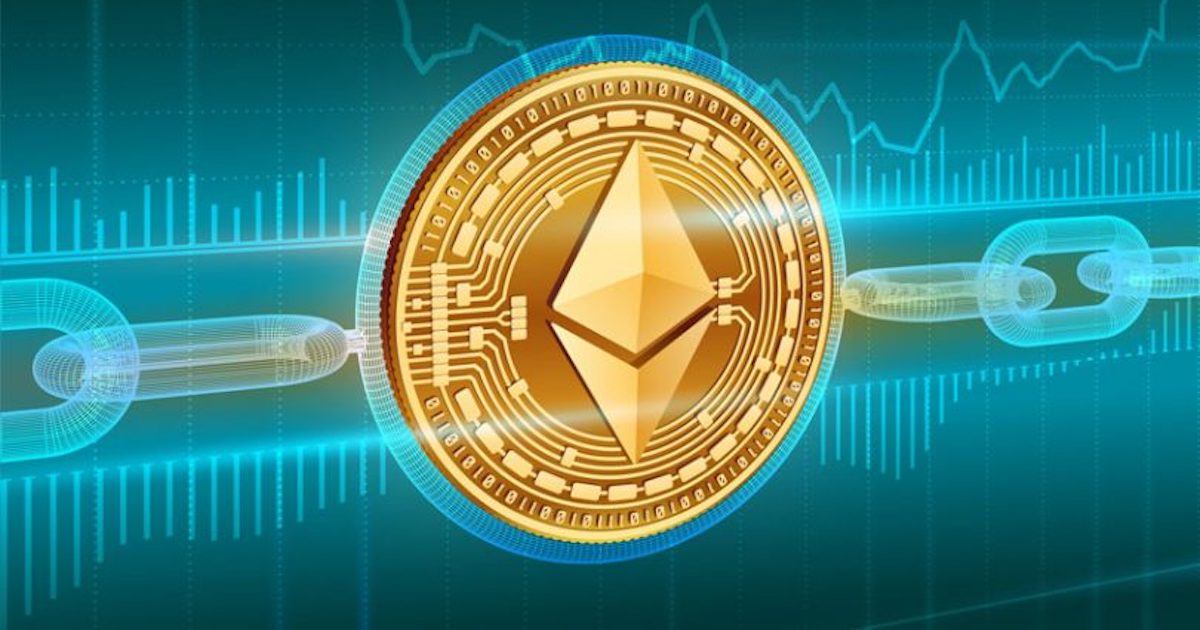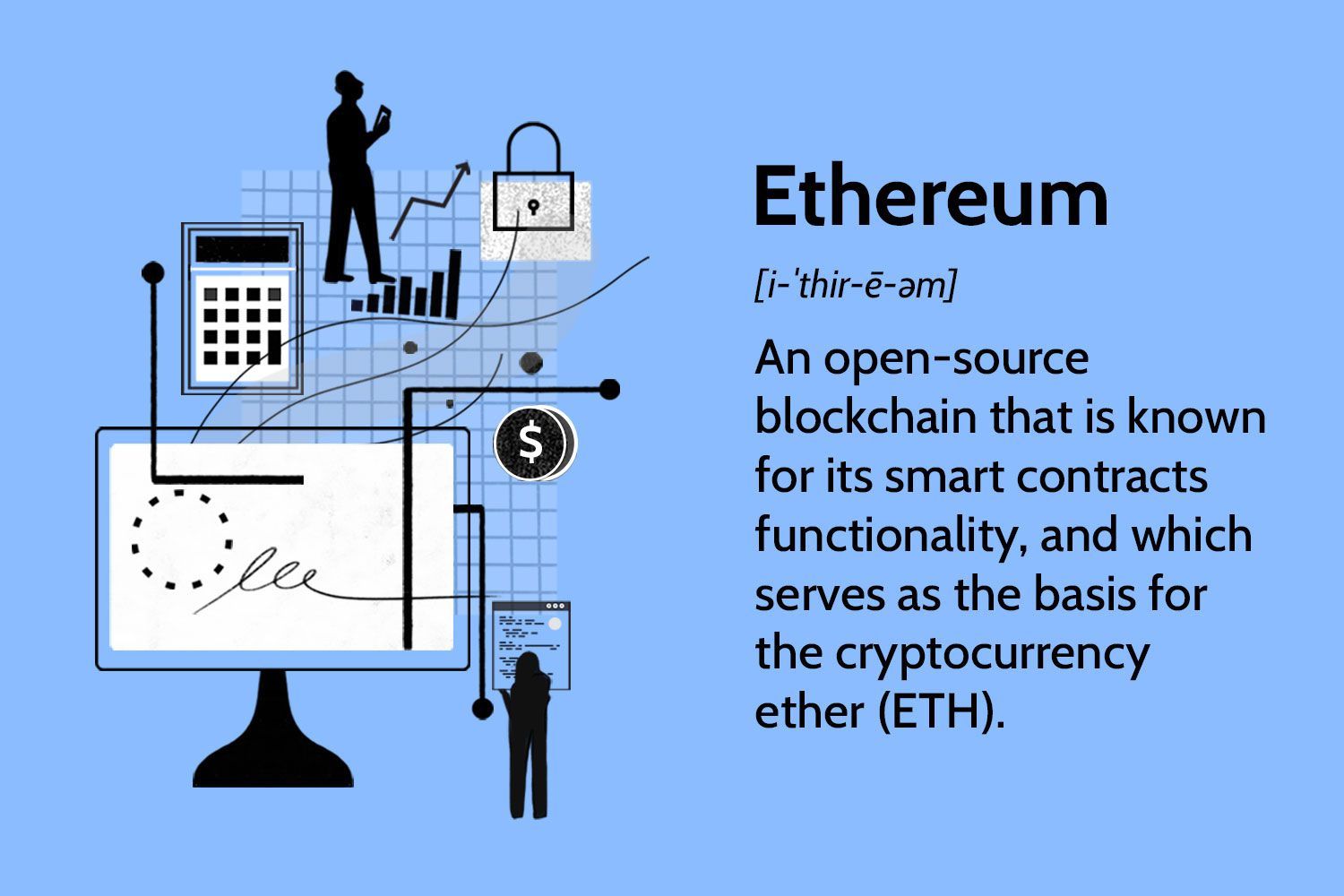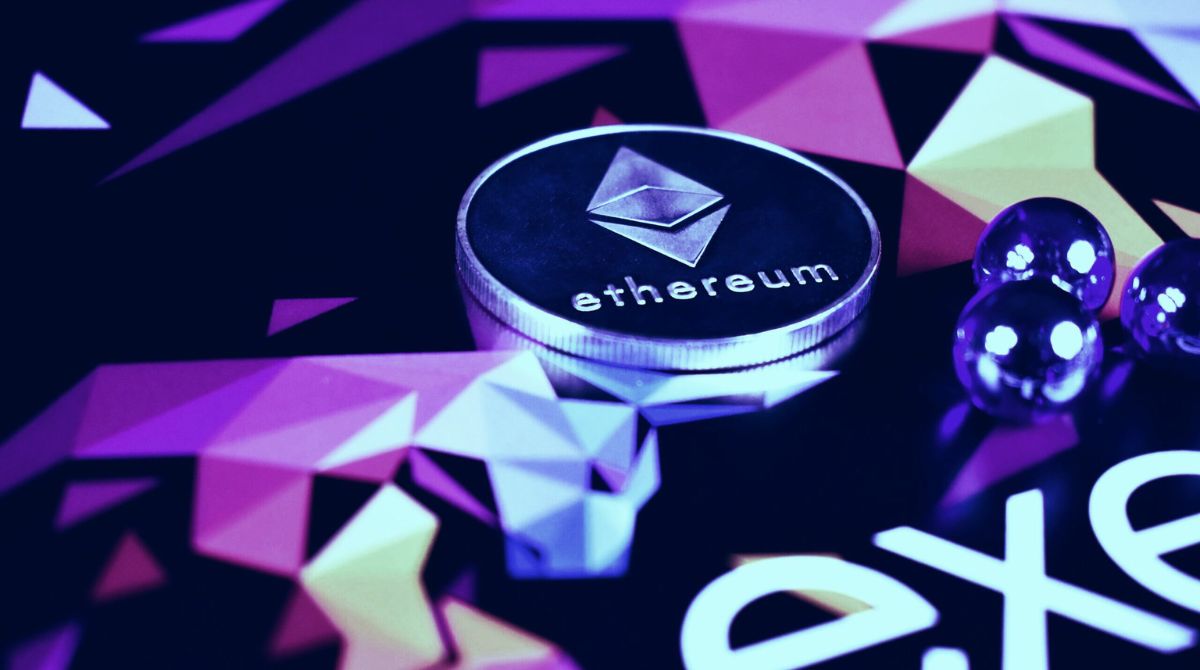Introduction
Blockchain technology has revolutionized the way we conduct transactions and store data. With its decentralized and immutable nature, it has gained popularity across various industries. At the heart of blockchain lies the concept of smart contracts, which are self-executing contracts with the terms of the agreement directly written into the code.
Smart contracts have proven to be efficient and secure, ensuring transparency and eliminating the need for intermediaries. However, to execute these smart contracts, a special virtual machine is required – the Ethereum Virtual Machine (EVM).
The EVM plays a crucial role in the Ethereum blockchain, enabling the execution of smart contracts and powering the decentralized applications (dApps) that run on the Ethereum network. Understanding the significance and workings of the EVM is essential for developers and users alike.
In this article, we will explore the concept of the EVM, its role in the blockchain ecosystem, and the benefits and limitations it brings.
Let’s dive into the fascinating world of the EVM and discover how it shapes the future of blockchain technology.
Overview of Blockchain
Before diving into the specifics of the EVM, let’s first have a brief overview of blockchain technology. At its core, a blockchain is a decentralized digital ledger that records transactions across multiple computers. It ensures transparency, security, and immutability by utilizing cryptographic algorithms.
Unlike traditional centralized systems, where a central authority is responsible for validating and verifying transactions, blockchain relies on a network of computers, known as nodes, to achieve consensus. Each node has a copy of the entire blockchain, making it extremely difficult to tamper with the data or manipulate the system.
The fundamental building block of a blockchain is the block, which contains a list of transactions. These blocks are linked together in a chronological order, forming a chain. To validate and add a block to the chain, a consensus mechanism, such as Proof of Work (PoW) or Proof of Stake (PoS), is employed.
Blockchain technology has gained significant popularity due to its potential to revolutionize various industries. It has the ability to provide secure, transparent, and decentralized solutions for financial services, supply chain management, healthcare, voting systems, and more.
One of the key features of blockchain technology is the concept of smart contracts. These self-executing contracts hold the terms of an agreement between parties and automatically enforce the agreed-upon conditions. Smart contracts ensure trust and eliminate the need for intermediaries, offering a more efficient and cost-effective approach to traditional contract management.
However, to execute smart contracts, a specialized virtual machine known as the Ethereum Virtual Machine (EVM) is required.
Next, we will explore in detail what the EVM is and how it plays a vital role in the blockchain ecosystem.
Understanding Smart Contracts
Smart contracts are one of the key innovations brought about by blockchain technology. These self-executing contracts are coded agreements that automatically enforce the terms and conditions of an agreement between parties. They eliminate the need for intermediaries, such as lawyers or escrow agents, and ensure transparency and accuracy in transactions.
A smart contract is written using programming languages that are specifically designed for this purpose, such as Solidity in the case of Ethereum. The contract code is stored on the blockchain, making it immutable and accessible to all parties involved.
Smart contracts are triggered when predefined conditions are met. For example, in a real estate transaction, the smart contract will automatically transfer ownership to the buyer once the agreed-upon payment is made. It removes the need for manual intervention, reduces the chances of fraud, and streamlines the process.
Smart contracts have a wide range of applications beyond finance and real estate. They can be utilized in supply chain management to track and verify the movement of goods, in healthcare systems to securely exchange patient data, and in decentralized applications (dApps) to govern the interaction between users and the application.
It is important to note that while smart contracts are powerful tools, they are only as reliable as the code they are written in. Bugs or vulnerabilities in the code can lead to serious consequences, including loss of funds or exploitation of the contract. Therefore, it is crucial for developers to conduct thorough testing and audits of the code before deploying it on the blockchain.
Now that we have a clear understanding of what smart contracts are, let’s delve into the concept of the Ethereum Virtual Machine (EVM) and its role in executing these contracts.
What is EVM?
The Ethereum Virtual Machine (EVM) is a runtime environment that executes smart contracts on the Ethereum blockchain. It acts as a sandboxed and isolated environment where the code of the smart contract is executed securely and deterministically.
The EVM is Turing complete, meaning that it can execute any algorithm or program given enough time and resources. It is designed to be a universal and flexible platform for executing smart contracts, enabling developers to build decentralized applications on the Ethereum network.
One of the key features of the EVM is its ability to read and execute bytecode instructions. Smart contracts written in high-level languages, such as Solidity, are compiled into bytecode, which is a low-level representation of the contract code. The EVM interprets and executes these bytecodes, ensuring that every node in the Ethereum network reaches the same result.
The EVM operates as a stack-based machine, where instructions operate on an operand stack. Instructions can push values onto the stack, pop values from the stack, perform arithmetic operations, control flow, and access memory storage. This stack-based architecture allows for efficient and secure execution of smart contracts.
When a smart contract is deployed on the Ethereum network, it is assigned a unique address that acts as an identifier. This address is used to invoke and interact with the contract. Users can send transactions to the contract address, triggering the execution of the contract code within the EVM.
The EVM ensures that the execution of smart contracts on different nodes produces the same result through consensus mechanisms such as PoW or PoS. This consensus ensures that all participants agree on the state and validity of the smart contract, maintaining the integrity of the blockchain.
Overall, the EVM plays a critical role in facilitating the execution of smart contracts on the Ethereum blockchain. It provides a secure and deterministic environment for executing code and enables the development of decentralized applications that can revolutionize various industries.
The Role of EVM in Blockchain
The Ethereum Virtual Machine (EVM) plays a crucial role in the overall functioning of the Ethereum blockchain. It serves as the execution environment for smart contracts, enabling the decentralized and secure execution of code on the blockchain.
One of the primary roles of the EVM is to ensure the consistency and determinism of smart contract execution across all nodes in the Ethereum network. Since every node executes the same bytecode instructions, it guarantees that all participants reach a consensus on the state and validity of the smart contract.
The EVM also provides a sandboxed environment for executing smart contracts, ensuring that they are isolated from the underlying operating system and other contracts. This isolation prevents malicious or poorly written contracts from impacting the overall stability and security of the network.
Furthermore, the EVM incorporates a gas mechanism to manage computational resources and prevent abuse of the network. Gas is used to measure the computational steps and storage requirements of executing a smart contract. Users must pay a certain amount of gas for each operation, incentivizing efficient and optimized contract code.
Another important role of the EVM is to facilitate communication between smart contracts and the outside world. Through its native functions, the EVM allows contracts to interact with blockchain data, read and write to storage, send transactions, and even call other contracts. This capability enables a wide range of decentralized applications to be built on top of the Ethereum platform.
The EVM also introduces a concept called the Ethereum Improvement Proposal (EIP). EIPs are proposals for changes and enhancements to the Ethereum protocol and ecosystem. This allows developers and stakeholders to suggest improvements to the EVM and the Ethereum network, ensuring its continuous evolution and adaptability.
Overall, the EVM acts as the backbone of the Ethereum blockchain, providing the necessary infrastructure for the execution and interaction of smart contracts. Its role in ensuring consensus, security, and the integration of external data makes it a vital component in the blockchain ecosystem.
How EVM Works
The Ethereum Virtual Machine (EVM) is a complex system that operates on a network of computers to execute smart contracts. Understanding how the EVM works is crucial for developers and users looking to build or interact with decentralized applications on the Ethereum platform.
At its core, the EVM is a stack-based virtual machine. It operates on a stack data structure, where values are pushed onto the stack and operations are performed on the topmost values. This stack-based architecture allows for efficient execution of instructions and facilitates the deterministic nature of smart contract execution.
When a smart contract is deployed on the Ethereum network, it is assigned a unique address. Users can interact with the contract by sending transactions to this address. The EVM receives these transactions and executes the corresponding contract code.
The EVM executes contract code through bytecode instructions. Smart contracts written in high-level languages, such as Solidity, are compiled into bytecode, which is a low-level representation of the contract code. The EVM interprets these bytecodes and executes the instructions in a sequential manner.
During execution, the EVM utilizes the concept of gas to manage computational resources. Gas is a unit of measurement that represents the cost of executing an operation. Each opcode in the bytecode has an associated gas cost, and users must pay a certain amount of gas for each operation they want to perform. This gas cost model incentivizes efficient and optimized contract code, as users need to pay for the computational resources they consume.
The EVM also maintains a persistent storage for each smart contract. This storage is implemented as an immutable key-value store that allows contracts to save and retrieve data. Contract state changes are stored on the blockchain, ensuring the transparency and integrity of the data.
Whenever a contract interacts with another contract, the EVM facilitates the communication. Contracts can call other contracts, passing arguments and receiving return values. This inter-contract communication opens up a wide range of possibilities for building complex and interconnected decentralized applications.
One of the key security features of the EVM is its ability to run in a sandboxed environment. The EVM is isolated from the underlying operating system and other contracts, preventing unauthorized access or malicious interactions. This isolation ensures that contracts operate securely without impacting the overall stability and security of the Ethereum network.
Overall, the EVM is a powerful and versatile runtime environment for executing smart contracts on the Ethereum blockchain. Its stack-based architecture, gas management system, persistent storage, and inter-contract communication capabilities make it a critical component in the Ethereum ecosystem.
Benefits of EVM
The Ethereum Virtual Machine (EVM) offers several benefits that contribute to the success and popularity of the Ethereum blockchain. Understanding these benefits can help developers and users appreciate the power and potential of the EVM in building decentralized applications.
Flexibility and Universal Execution: The EVM is Turing complete, meaning it can execute any algorithm given enough time and resources. This flexibility allows developers to create complex and innovative smart contracts, enabling a wide range of decentralized applications to be built on the Ethereum platform.
Secure and Deterministic Execution: The EVM operates in a sandboxed environment, ensuring the isolation of contracts from the underlying operating system and other contracts. This security measure prevents unauthorized access and helps maintain the integrity of the Ethereum network. Additionally, the deterministic nature of contract execution ensures that all nodes in the network reach the same result, guaranteeing consensus and trust.
Gas Mechanism: The gas mechanism employed by the EVM helps manage computational resources and prevents abuse of the network. By requiring users to pay for the operations they execute, it incentivizes optimized and efficient contract code. This mechanism promotes resource conservation and improves the overall scalability of the Ethereum platform.
Interoperability and Inter-Contract Communication: The EVM enables contracts to communicate with each other, opening up a world of possibilities for building interconnected decentralized applications. This feature allows for the creation of complex systems and protocols that rely on the interaction and collaboration of multiple contracts.
Support for Smart Contract Upgradability: The EVM supports the concept of smart contract upgradability by allowing contracts to delegate functionality to other contracts. This delegation enables developers to upgrade and improve contract functionality while preserving the existing state and balances, providing flexibility and adaptability in contract design.
Widespread Adoption and Developer Community: The EVM has gained widespread adoption and has a large and active developer community. This ecosystem provides extensive resources, documentation, and tools to aid developers in building decentralized applications and smart contracts. The widespread adoption also ensures a vibrant and robust market for executing and interacting with various applications on the Ethereum blockchain.
Overall, the EVM’s flexibility, security, gas mechanism, inter-contract communication capabilities, support for upgradability, and the vibrant developer community make it a powerful and valuable component of the Ethereum blockchain. Its benefits contribute to the growth and widespread adoption of Ethereum as a leading blockchain platform.
Limitations of EVM
While the Ethereum Virtual Machine (EVM) offers numerous benefits, it also has its limitations. Understanding these limitations is essential for developers and users to make informed decisions when building or interacting with applications on the Ethereum platform.
Scalability: One of the notable limitations of the EVM is its scalability. As more applications and users join the Ethereum network, the demand for computational resources increases, resulting in slower transaction processing times. This scalability challenge hinders the adoption of Ethereum for high-volume and real-time applications, such as payment systems or large-scale enterprise solutions.
Gas Costs: While the gas mechanism is effective in incentivizing efficient contract code, the associated gas costs can pose challenges for developers. Complex or resource-intensive operations can be expensive to execute, making it harder for developers to build applications that require significant computational resources. The gas costs can also deter users from interacting with certain contracts due to high transaction fees.
Immutability: Once deployed on the Ethereum network, smart contracts are immutable, meaning they cannot be modified or updated. This immutability is a feature that ensures transparency and trust, but it can also be a limitation if a contract contains bugs or vulnerabilities. Without the ability to update contracts, developers need to carefully plan and thoroughly test their code to avoid introducing any critical issues or security flaws.
Lack of Native Support for External Data: The EVM does not have built-in support for accessing external data sources, such as APIs or web services. This limitation can make it challenging to obtain real-time or off-chain data directly in smart contracts. Developers often rely on third-party solutions, such as oracles, to bridge the gap between blockchain and external data sources.
Complexity and Learning Curve: Developing smart contracts for the EVM requires learning a specific programming language, such as Solidity, and understanding the nuances of blockchain architecture. The complexity of the EVM and the associated tools and frameworks can pose challenges for developers new to blockchain technology. Additionally, the immutability and irreversible nature of smart contracts make it crucial to fully grasp the intricacies of coding on the EVM before deploying contracts on the blockchain.
Environmental Impact: The energy consumption of the Ethereum network, driven by the EVM’s consensus mechanism, has raised concerns about its environmental impact. The Proof of Work (PoW) consensus mechanism, which Ethereum currently utilizes, requires significant computational power, leading to substantial energy consumption. Efforts are underway to transition Ethereum to a more energy-efficient consensus mechanism, such as Proof of Stake (PoS), to address this limitation.
Despite these limitations, the EVM continues to be a foundational component of the Ethereum blockchain. The Ethereum community is actively working on addressing these challenges through research, development, and ongoing protocol upgrades to improve scalability, reduce costs, and enhance the overall user experience on the platform.
Popular Platforms using EVM
The Ethereum Virtual Machine (EVM) has become the foundation for several popular platforms and projects that leverage the power and capabilities of the Ethereum blockchain. These platforms have built upon the EVM to offer diverse functionalities and cater to specific use cases within the decentralized ecosystem.
Ethereum: The Ethereum blockchain itself is the most prominent platform utilizing the EVM. It enables the creation and execution of smart contracts, allowing developers to build decentralized applications (dApps) and deploy their tokens through the ERC-20 standard. Ethereum’s extensive adoption, developer community, and infrastructure make it the go-to platform for various industries looking to leverage blockchain technology.
Binance Smart Chain (BSC): Binance Smart Chain, launched by the popular cryptocurrency exchange Binance, also utilizes the EVM. BSC aims to provide a fast and low-cost alternative to Ethereum, addressing its scalability challenges. It offers compatibility with existing Ethereum tools and provides developers and users with a familiar environment to build and interact with decentralized applications.
Cardano: Cardano, a blockchain platform developed by IOHK, also employs a modified version of the EVM called IELE. IELE enables the execution of smart contracts on the Cardano network, providing developers with a secure and reliable environment to build decentralized applications. Cardano aims to improve upon the limitations of Ethereum’s scalability and offer efficient, sustainable, and interoperable solutions.
Ripple: Ripple, known for its digital payment protocol and cryptocurrency XRP, introduced the XRP Ledger, which utilizes a modified version of the EVM called Codius. Codius enables developers to build and deploy smart contracts on the XRP Ledger, allowing for complex financial applications and programmable transactions on Ripple’s decentralized network.
Tron: Tron is a blockchain platform that also incorporates the EVM for executing smart contracts. It aims to create a decentralized entertainment ecosystem, providing a platform for content creators and developers to monetize their works. Tron offers high transaction throughput and low fees, making it attractive for gaming, gambling, and other entertainment-related applications.
Polkadot: Polkadot is a multi-chain platform that allows different blockchains to interoperate and share information. Polkadot includes a virtual machine called the Polkadot Runtime Environment (PRE), which supports running EVM-compatible smart contracts. The integration of the EVM within Polkadot allows developers to leverage the interoperability features of the platform while utilizing Ethereum-compatible code.
VeChain: VeChain is a blockchain platform that specializes in supply chain management and product authentication. It utilizes a modified version of the EVM to enable the execution of smart contracts on its network. By utilizing the EVM, VeChain provides transparency, traceability, and immutability in supply chain processes, ensuring the authenticity and integrity of products.
These platforms are just a few examples of the many projects utilizing the EVM to provide specific functionalities and tailor-made solutions within the decentralized ecosystem. They showcase the flexibility and versatility of the EVM in supporting various use cases and industries, further expanding the potential of blockchain technology.
Conclusion
The Ethereum Virtual Machine (EVM) is a critical component of the Ethereum blockchain, enabling the execution of smart contracts and powering decentralized applications (dApps) on the network. By providing a sandboxed and deterministic environment, the EVM ensures the security, reliability, and transparency of contract execution.
Through its stack-based architecture, gas mechanism, and inter-contract communication capabilities, the EVM offers developers a flexible and powerful platform to build innovative decentralized applications. The EVM’s support for smart contract upgradability and its compatibility with various programming languages further enhance its usability and versatility.
However, the EVM does have limitations that need to be considered. Scalability remains a challenge, and the gas cost model can impact the affordability of transactions and resource-intensive operations. Additionally, the immutability of smart contracts requires careful planning and testing to avoid any potential issues or security vulnerabilities.
Despite these limitations, the EVM has paved the way for the widespread adoption of Ethereum and has fueled the development of a vibrant ecosystem with decentralized applications, platforms, and protocols. Ethereum, Binance Smart Chain, Cardano, Ripple, Tron, Polkadot, VeChain, and many other platforms and projects have utilized the EVM to provide unique solutions and services within various industries.
The EVM’s popularity and the active community of developers and users have contributed to the continuous growth and evolution of the Ethereum blockchain. Ongoing research and development efforts focus on addressing scalability challenges, reducing gas costs, and improving user experience to ensure that the EVM remains a leading platform for building decentralized applications.
As blockchain technology continues to advance, the EVM will play a crucial role in shaping the future of decentralized applications and the broader adoption of blockchain in numerous industries. Understanding the EVM and its capabilities empowers developers and users to harness the potential of Ethereum and contribute to the development of a decentralized and trustless ecosystem.







